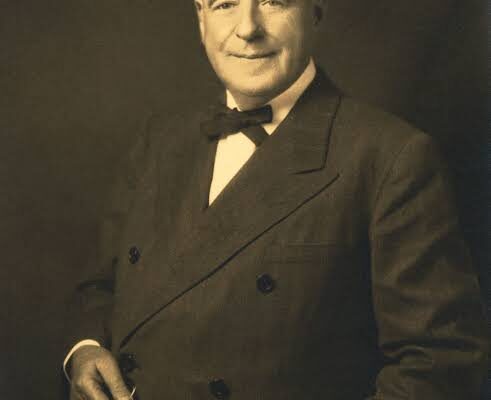Celebrating Steadman Vincent Sanford Born 154 Years Ago Whose Vision And Leadership Forever Shaped Georgia Athletics Education And Southern Conference History
On this day 154 years ago, in 1871, a legendary figure in the history of the University of Georgia and the broader Southern athletics landscape was born in Covington, Georgia. Steadman Vincent Sanford, whose name lives on through the iconic Sanford Stadium and through countless contributions to collegiate athletics and education, remains one of the most influential leaders in the state’s history. Sanford’s life was a testament to vision, perseverance, and an unwavering belief in the transformative power of both academics and athletics. His legacy continues to resonate nearly eight decades after his passing in 1945, and today the University of Georgia community, along with college sports fans across the South, remembers the extraordinary impact he had on higher education and collegiate competition.
Sanford grew up in Georgia at a time when the South was still recovering from the devastation of the Civil War, and the opportunities in education and athletics were far from the level of prestige they would later achieve. His passion for learning and his belief that the University of Georgia could become a leading institution in the South shaped his life’s mission. In his professional journey, Sanford served as President of the University of Georgia, guiding the institution through a transformative period, before becoming the Chancellor of the University System of Georgia. In both roles, he demonstrated a rare ability to blend academic progress with athletic advancement, recognizing that a strong athletic identity could elevate the prominence of a university as much as its scholarly achievements.
One of Sanford’s most enduring contributions to American sports history was his instrumental role in the formation of the Southern Conference and, later, the Southeastern Conference (SEC). At a time when college football and athletics were gaining popularity but lacked formal organization in the South, Sanford recognized the importance of structured competition and governance. He believed that organizing schools into conferences would not only ensure fairness and consistency but also enhance rivalries and regional pride. His leadership helped lay the foundation for what would eventually become one of the most powerful and influential athletic conferences in the nation, the SEC. Today, as the SEC dominates college football and wields unmatched influence in the NCAA landscape, it is easy to forget that its roots can be traced back to visionaries like Sanford, who saw the need for order, growth, and opportunity in Southern athletics.
Beyond his role in conference formation, Sanford’s name is most famously attached to Sanford Stadium, the legendary home of the Georgia Bulldogs football program. Opened in 1929, the stadium was more than just a playing field; it was a symbol of the university’s rising stature in the South and beyond. Sanford pushed tirelessly for the creation of the stadium, understanding that a first-class facility would attract talent, inspire fans, and elevate the prestige of the program. When the stadium opened, it was hailed as one of the most beautiful and well-designed football venues in the nation, and over time it grew into one of the most iconic landmarks in all of college sports. The roar of over 90,000 Bulldog fans on fall Saturdays is perhaps the most living tribute to Steadman Sanford, whose vision ensured that Georgia football would always have a grand stage on which to perform.
Sanford’s influence extended beyond football. He was also responsible for the development of UGA’s first baseball stadium, known as Sanford Field, and he oversaw the construction of Woodruff Hall in 1924, which provided the basketball program with a much-needed home. These facilities reflected his belief that athletics in all forms could contribute to the identity and strength of the university. He was not simply a football enthusiast but a comprehensive supporter of athletics, ensuring that UGA’s student-athletes in multiple sports had the resources and infrastructure to succeed. In doing so, he planted seeds that would grow into a vibrant athletic department, one that today ranks among the nation’s elite.
Sanford’s dual focus on academics and athletics made him a remarkable leader. As President of the University of Georgia, he was committed to strengthening the institution’s academic reputation. He worked to improve facilities, expand programs, and attract scholars who would enhance the university’s intellectual life. Later, as Chancellor of the University System of Georgia, he applied that same vision across the state, influencing higher education policy in ways that uplifted multiple institutions. Sanford saw education as a public good and athletics as a partner in that mission, capable of building community, fostering school pride, and encouraging excellence.
His life was not without challenges. Leading a major university during the first half of the 20th century meant navigating financial difficulties, political pressures, and the complexities of a rapidly changing world. The Great Depression, in particular, posed serious obstacles to growth and development. Yet, Sanford’s determination never wavered. He pushed forward with his plans for facilities, conference structures, and academic expansion, relying on his ability to persuade others of the long-term benefits of his vision. His persistence often turned skeptics into supporters, and his leadership earned him lasting respect.
When Sanford passed away in 1945 at the age of 74, he left behind a legacy that was already deeply entrenched in the University of Georgia and the state’s educational and athletic systems. His name had already been immortalized in Sanford Stadium, a fitting tribute to a man who believed that great universities should have great athletic programs. His role in shaping the SEC had already secured his place in the annals of college athletics history. Yet, the full extent of his impact has only become clearer with the passage of time. Every SEC championship, every Georgia football Saturday, every athlete who competes in facilities inspired by his vision—all of these moments echo the work and dedication of Steadman Vincent Sanford.
Today, 154 years after his birth, Sanford is remembered not only as a university president and system chancellor but as a pioneer. He was a man ahead of his time, someone who understood the power of athletics to build community and identity, someone who saw the value of education in lifting society, and someone who combined those passions into a career of remarkable achievement. His story is one of vision, resilience, and devotion to the University of Georgia and the South at large.
As we reflect on Sanford’s legacy, it is important to appreciate the scale of his contributions. The SEC, now a billion-dollar enterprise with unmatched influence in college sports, began in part because of his foresight. Georgia athletics, now a powerhouse competing for national championships in multiple sports, grew on the foundation he built with facilities like Sanford Field, Woodruff Hall, and Sanford Stadium. The University of Georgia itself, respected both for its academic excellence and athletic tradition, carries forward the spirit of leadership Sanford embodied.
In the pantheon of great figures in Georgia history, Steadman Vincent Sanford stands out as one of the most influential. His life’s work continues to inspire, reminding us that progress often comes from those willing to think boldly and act decisively. He saw what Georgia could become, what the South could become, and he worked tirelessly to bring that vision to life. On the anniversary of his birth, we celebrate not just a man, but a legacy that endures in every cheer that echoes through Sanford Stadium, in every SEC rivalry that captures national attention, and in every student who walks the halls of a stronger, more vibrant University of Georgia.
Steadman Vincent Sanford’s story is, at its heart, the story of the South’s rise in collegiate athletics and education. His memory lives on in brick and mortar, in traditions and triumphs, and in the identity of a university and conference that continue to shape American sports and learning. One hundred fifty-four years after his birth, his impact is as strong as ever, and his legacy will remain central to Georgia and the SEC for generations to come.



